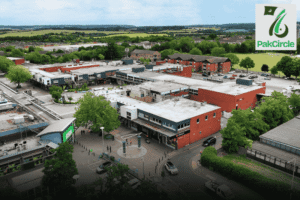Create High-Quality Voiceovers without a studio is now easier than ever, thanks to affordable microphones, professional editing software, and simple soundproofing techniques. You no longer need a costly studio setup to produce high-quality voiceovers without a studio—all it takes is the right combination of tools and strategies. Think you need an expensive studio setup to create professional voiceovers? Think again! With the right tools and techniques, you can create voiceovers without a studio that sound polished and professional.
Gone are the days when professional voiceovers required costly studio setups. Today, with advancements in technology, you can easily create voiceovers without a studio from the comfort of your home. Whether you’re a content creator, aspiring voice actor, or small business owner, all you need is the right combination of tools, techniques, and a bit of creativity.
This step-by-step guide will show you how to create professional voiceovers without a studio, whether you’re a content creator, freelancer, or business owner.
Quick Setup Tips for Creating Voiceovers Without a Studio
| Equipment | Purpose | Recommended Models |
| Microphone | Captures high-quality audio | Blue Yeti, Rode NT-USB |
| Audio Editing Software | Enhances and polishes recordings | Audacity, Adobe Audition |
| Portable Sound Shield | Reduces background noise | Aston Halo, Neewer Sound Shield |
Why You Don’t Need a Studio for Professional Voiceovers
Creating voiceovers without a studio is not only possible but also practical. Here’s why:
- Cost-Efficiency: Save money by using affordable equipment and software.
- Flexibility: Record whenever and wherever you like without needing a studio booking.
- Ease of Use: Modern tools and apps make it simple to achieve professional-grade audio at home.
How to Create Voiceovers Without a Studio
1. Choose the Right Microphone
The microphone is the backbone of your setup. Here are some budget-friendly options:
- USB Microphones: Easy to use and affordable, perfect for beginners.
- Dynamic Microphones: Ideal for minimizing background noise in non-studio environments.
Recommended models: Blue Yeti, Audio-Technica AT2020, and Rode NT-USB.
2. How to Soundproof for Voiceovers Without a Studio
Soundproofing doesn’t require a dedicated studio. Try these DIY tips:
- Use a closet filled with clothes to absorb sound.
- Hang heavy blankets or curtains to reduce echoes.
- Invest in portable sound shields for your microphone.
3. The Best Editing Software for Voiceovers Without a Studio
Editing software is crucial for polishing your recordings. Some popular options include:
- Audacity: Free and user-friendly, ideal for beginners.
- Adobe Audition: A professional-grade tool with advanced features.
- GarageBand (for Mac users): Great for basic editing and effects.
Microphone recommendations:
- Best USB Microphones for Voiceovers – Shure
- Top Rated Voiceover Microphones – Rode
Audio Editing Software:
4. Improving Voice Quality for Voiceovers Without a Studio
Professional voiceovers require clarity, consistency, and emotion. Practice the following:
- Breathing Techniques: Helps maintain steady and clear delivery.
- Warm-Ups: Loosen your vocal cords before recording.
- Pacing: Speak at a consistent speed to ensure clarity.
5. Test and Improve Your Setup
Before finalizing your recording, test your setup by:
- Recording a sample clip and reviewing it for noise or inconsistencies.
- Adjusting microphone placement to capture the best sound.
- Experimenting with audio effects in your software for a polished finish.
Storytelling: From Hobbyist to Professional Voiceover Artist
Meet Sarah, a freelance marketer who wanted to add voiceovers to her video projects. Without a studio or expensive equipment, she followed these simple steps to set up a home recording space. Using a USB microphone, heavy curtains for soundproofing, and free software like Audacity, Sarah created professional-quality voiceovers that amazed her clients. Today, she has expanded her services, proving that anyone can achieve great results with the right approach.
Best Tools for High-Quality Voiceovers
Creating high-quality voiceovers without a studio requires the right set of tools. From microphones to audio editing software, using professional equipment can significantly improve sound clarity and reduce background noise. Below is a list of the best tools for achieving studio-quality voiceovers at home.
1. Best Microphones for Voiceovers Without a Studio
A high-quality microphone is essential for recording clear and professional voiceovers.
- Blue Yeti USB Microphone – Perfect for beginners, offering plug-and-play functionality and excellent sound clarity.
- Audio-Technica AT2020 – A great option for noise-free recordings with a cardioid polar pattern to focus on voice.
- Rode NT-USB – Delivers studio-quality sound with built-in pop filter and USB connectivity.
- Shure SM7B – Used by professionals for podcasts, narration, and audiobooks, featuring excellent background noise reduction.
2. Best Audio Editing Software for Professional Voiceovers
Once you’ve recorded your voiceover, audio editing software helps refine and enhance the sound.
- Audacity (Free) – A beginner-friendly audio editing tool with noise reduction, equalization, and sound effects.
- Adobe Audition (Paid) – A professional-grade voice editing software with advanced noise reduction, multi-track editing, and reverb control.
- GarageBand (Mac Users) – A great built-in Apple tool for recording and editing voiceovers.
- Descript (AI-Powered Editing) – Uses speech-to-text AI for easy audio editing and noise cancellation.
3. Soundproofing Tools for Noise-Free Voiceovers
Reducing background noise is crucial for clean and clear voiceovers.
- Portable Sound Shields (Aston Halo, Neewer Sound Shield) – Block unwanted background noise and improve voice clarity.
- Foam Acoustic Panels – Helps reduce echoes and reverb, creating a studio-like environment.
- Pop Filters (Aokeo, Neewer Pop Filter) – Eliminates harsh “P” and “S” sounds for smoother recordings.
4. Best Headphones for Voice Monitoring
Using professional headphones helps monitor recording quality and make precise edits.
- Audio-Technica ATH-M50X – Offers accurate sound monitoring with deep bass response.
- Beyerdynamic DT 770 Pro – Provides crystal-clear sound, perfect for detecting imperfections in recordings.
5. Online Tools for AI Voice Enhancements
AI-powered tools can automatically improve voice quality with noise cancellation and sound optimization.
- Adobe Podcast Enhance – Uses AI to remove background noise and enhance clarity.
- Krisp.ai – Removes echo and background noise for real-time voiceovers.
- iZotope RX Elements – A powerful tool for de-noising, de-reverbing, and vocal enhancement.
Conclusion
Creating professional-quality voiceovers without a studio is no longer a challenge with the tools and strategies available today. By investing in a good microphone, setting up a soundproof space, and mastering basic editing, you can produce results that rival studio recordings. This guide proves that anyone can start their voiceover journey without needing expensive equipment or a dedicated space. By following these simple yet effective techniques, anyone can create high-quality voiceovers without a studio. With the right microphone, software, and soundproofing tricks, you can achieve professional audio quality without an expensive studio setup.
- Want to enhance your presentations with high-quality voiceovers? Read How to Build Presentations That Grab Attention Instantly.
- Need background content for your voiceover projects? Learn How to Download Videos with a Video Downloader.
- Looking to get paid for your voiceover work? Check out How to Create a Business PayPal Account in Pakistan.
Ready to create voiceovers without a studio? Share this guide with friends or visit Pakcircle.pk for more tips and resources on voiceover techniques and affordable equipment recommendations. Let’s get started on your professional voiceover journey!
FAQs
How can I create professional voiceovers without a studio?
You can create professional voiceovers without a studio by using a high-quality USB microphone, soundproofing your space, and editing with software like Audacity or Adobe Audition.
What is the best microphone for voiceovers without a studio?
For voiceovers without a studio, USB microphones like Blue Yeti and Rode NT-USB offer professional sound quality at an affordable price.
How do I reduce background noise for voiceovers without a studio?
To reduce background noise in voiceovers without a studio, use a portable sound shield, record in a closet, and hang thick blankets to absorb sound reflections.
What software is best for voiceovers without a studio?
For editing voiceovers without a studio, Audacity is a great free option, while Adobe Audition provides advanced editing tools for professionals.
Can I record voiceovers without a studio using my smartphone?
Yes! Many smartphones paired with an external microphone like the Rode SmartLav+ can produce high-quality voiceovers without a studio.
How do I make my voiceovers sound more professional?
Improve voiceovers without a studio by using breathing techniques, practicing clear pronunciation, and applying EQ adjustments during editing.
Is it possible to start a career in voiceovers without a studio?
Yes! Many freelancers record voiceovers without a studio and sell them on platforms like Fiverr, Upwork, and Voices.com.
What’s the best budget-friendly setup for voiceovers without a studio?
A Blue Yeti microphone, pop filter, and Audacity software are great budget-friendly tools for voiceovers without a studio.
How do I ensure my voiceovers sound clear and natural?
To improve voiceovers without a studio, record in a quiet space, keep your microphone at the right distance, and adjust your tone naturally.
What are the biggest challenges of recording voiceovers without a studio?
The biggest challenges in voiceovers without a studio include background noise, poor microphone positioning, and inconsistent audio levels.








